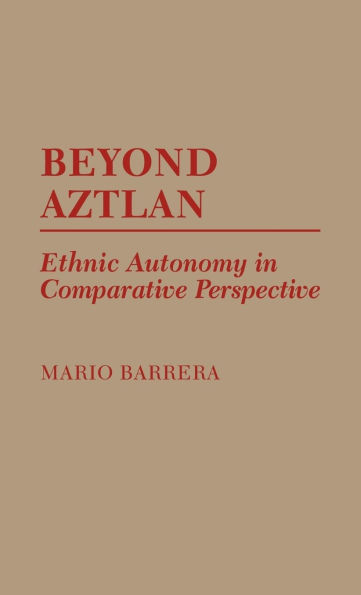Read an Excerpt
If there is an overriding factor in Chicano history, it is the presence of a pervasive and institutionalized system of discrimination affecting all aspects of social life. In the economic realm, this system has taken such forms as dual wages (unequal pay for the same work) and occupational stratification (certain jobs more or less "reserved" for Chicanos and other jobs off-limits). In the political arena, a parallel system has been effected through such mechanisms as gerrymandering and poll taxes. In education, it has taken the form of segregated schools and unequal resources. In housing, racial covenants were used in many places to keep Chicanos out of certain parts of town, by requiring Anglos purchasing homes to promise not to resell their properties to non-Anglos. The list goes on and on. Some scholars have used the term "internal colonialism" to refer to this generalized system.
The pattern of institutional discrimination and segregation was applied to Chicanos in the nineteenth century. Similar patterns had been created for blacks and Native Americans earlier. It was partly motivated by a perception of self-interest on the part of some sectors of the Anglo population, and partly out of prejudice. As shown in earlier chapters, this system became the main target of Chicano political activists after the 1920s as they focused on the goal of equality.
One of the historical ironies in all this is that the barriers erected against Chicanos had the effect of reinforcing Mexican cultural patterns by preventing Chicanos from fully participating in the mainstream social and cultural life of the United States (San Miguel, 1984:205). This was an unintended consequence of the system of institutional discrimination. Indeed, the reinforcement of Mexican culture ran directly counter to the dominant cultural attitudes, which centered around the Americanization of "foreign" groups and disdain and intolerance for non-Anglo cultures.
Institutionalized discrimination also led eventually to the creation of alternative Chicano identities, and particularly to such youth subcultures as the pachuco or zootsuiter of the 1940s, and the cholo and lowrider of the 1970s and 1980s (see Plascencia, 1983: Madrid, 1972).
As we have seen, Chicano political struggles were aimed at breaking the patterns of discrimination in order to provide access to the dominant institutions and to allow individual upward mobility to take place. This essentially integrationist effort has succeeded in part, aided considerably by a number of developments in American society since the 1930s, particularly the New Deal reforms and the labor shortages created by World War II (see Barrera, 1979:Chapter 5). The rapid urbanization of Chicanos in this century has also played an important role.
Since the changes in the status of Chicanos have taken place over several decades, their significance has not always been fully appreciated. Nevertheless, their impact has been substantial. Integration into the dominant institutions is taking place, and greater economic mobility is part of that picture. One consequence of this mobility is greater class differentiation within the Chicano population, as is generally recognized.
However, there is another important consequence to these changing patterns, one that many in the Chicano community refuse to recognize or acknowledge. It represents the second historical irony: as the institutionalized barriers slowly erode, so do the cultural patterns that they have played a major role in maintaining. The contradiction here is that the partial achievement of the egalitarian goal has further undermined the prospect for attaining the communitarian goal. Far from being resolved, the dilemma that this creates has not been clearly perceived or addressed by the Chicano political leadership.
(excerpted from the chapter 6 introduction)



